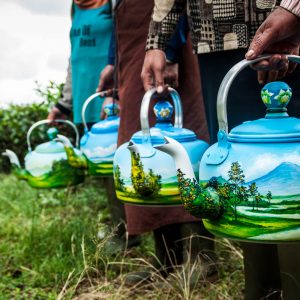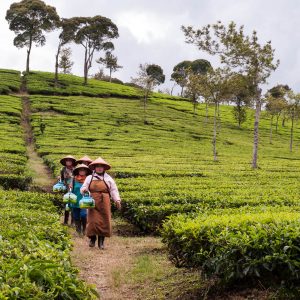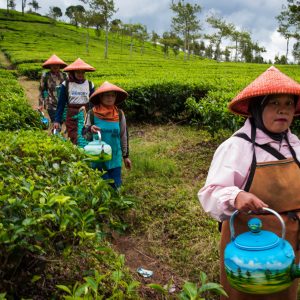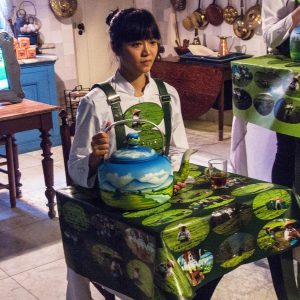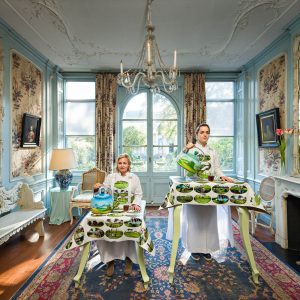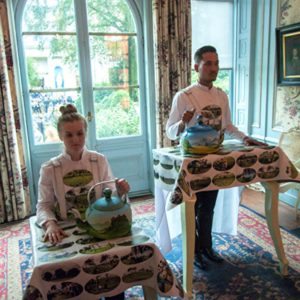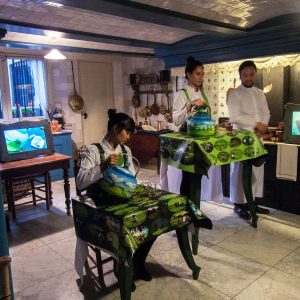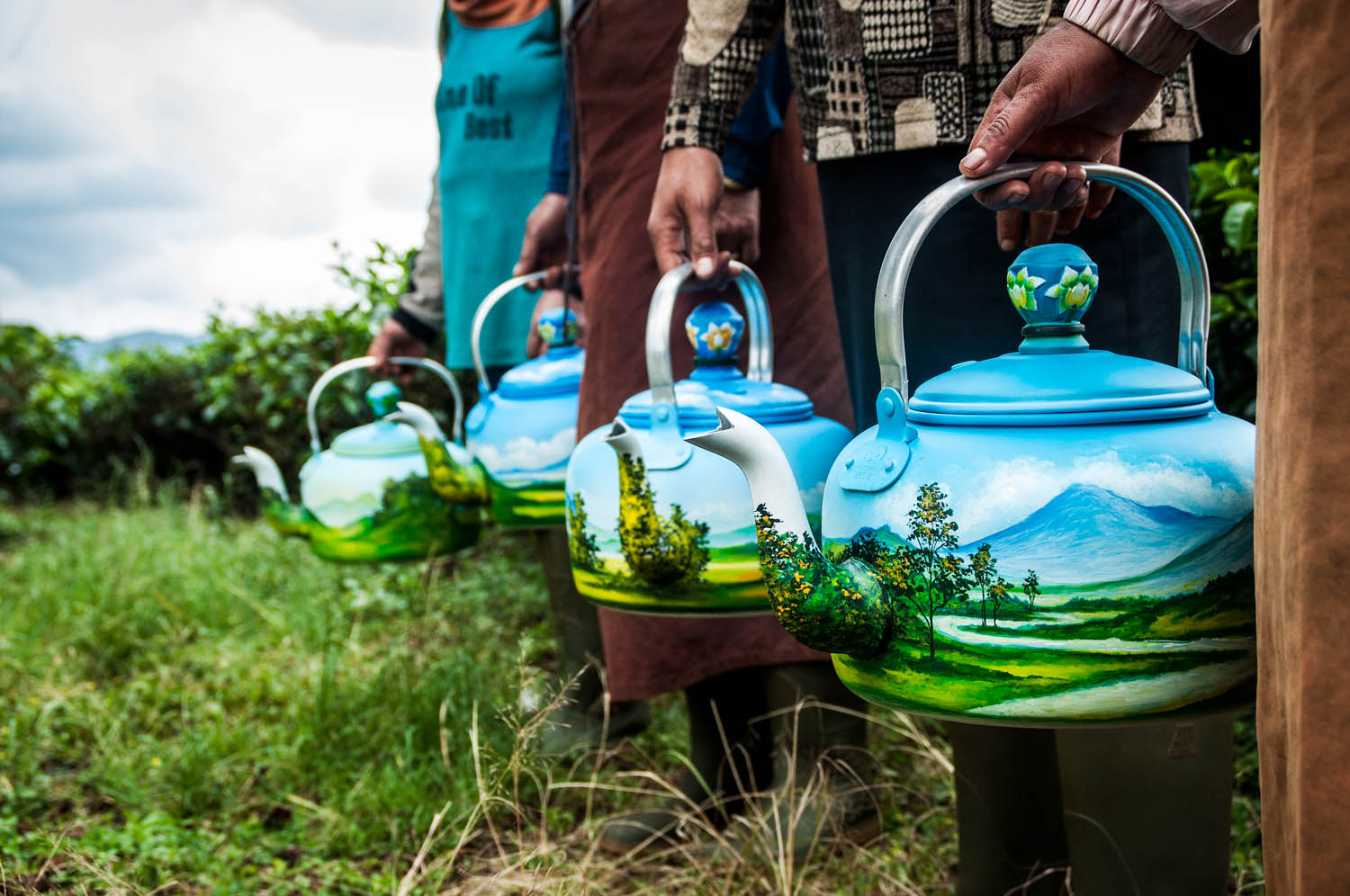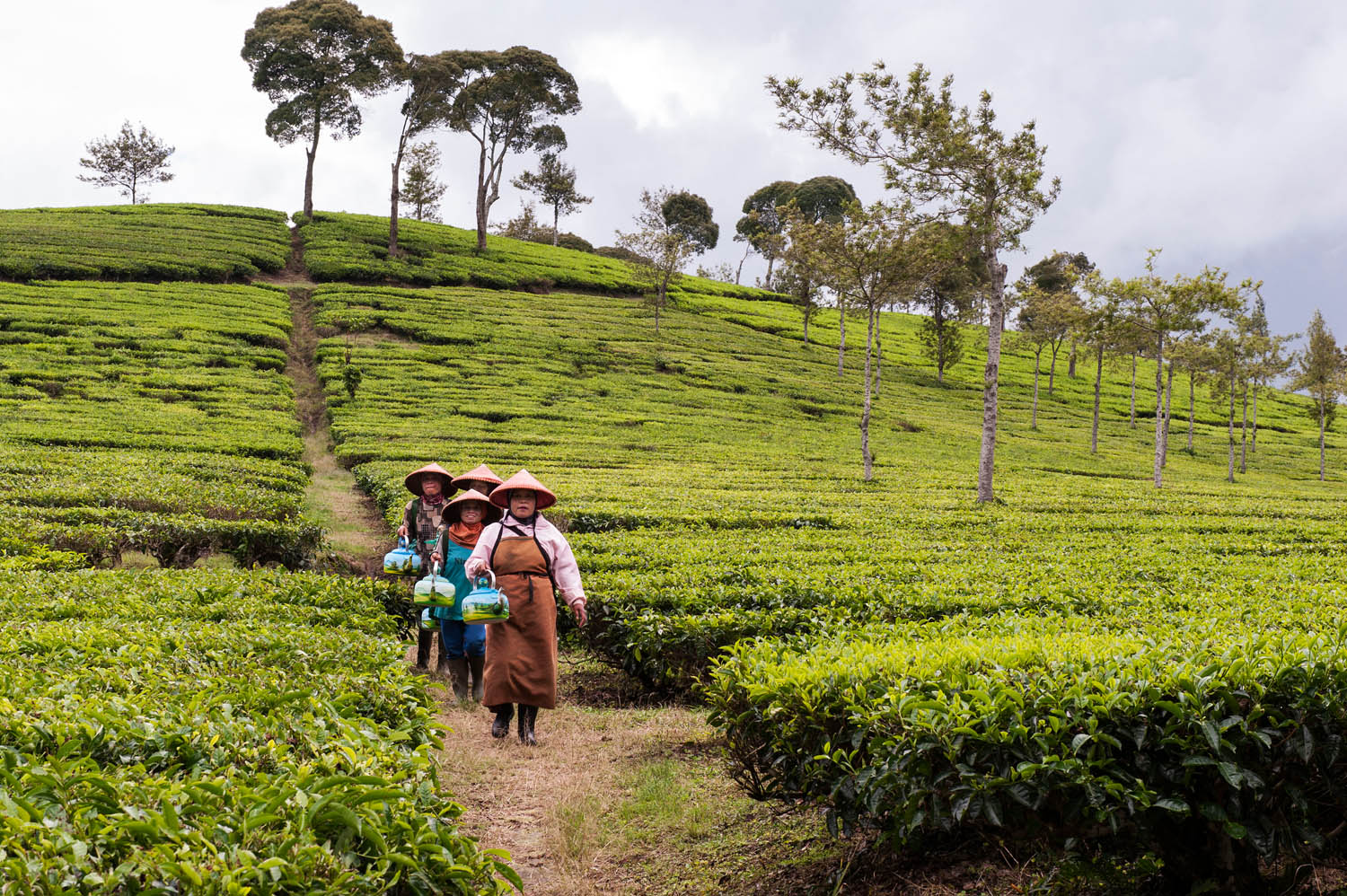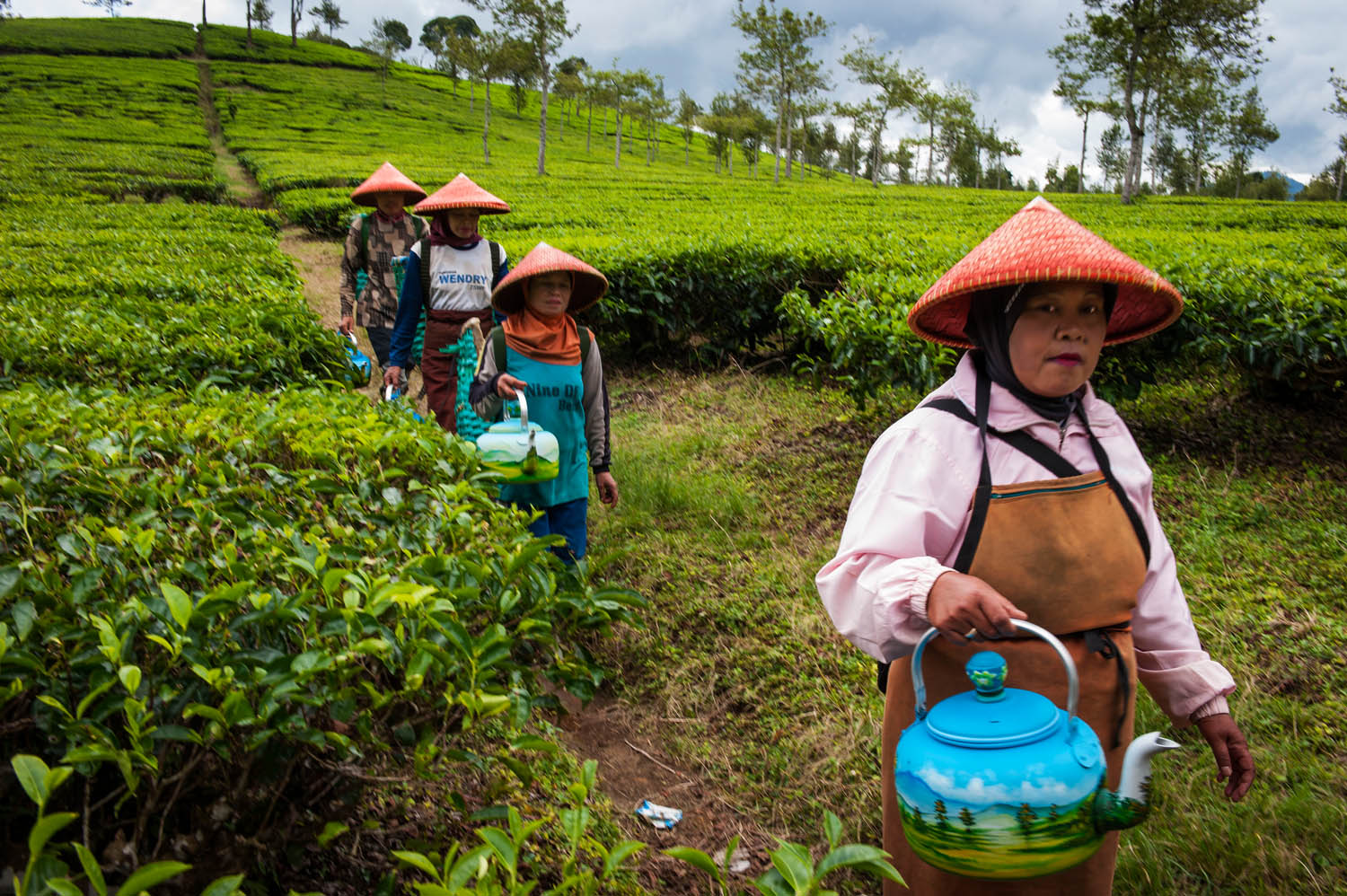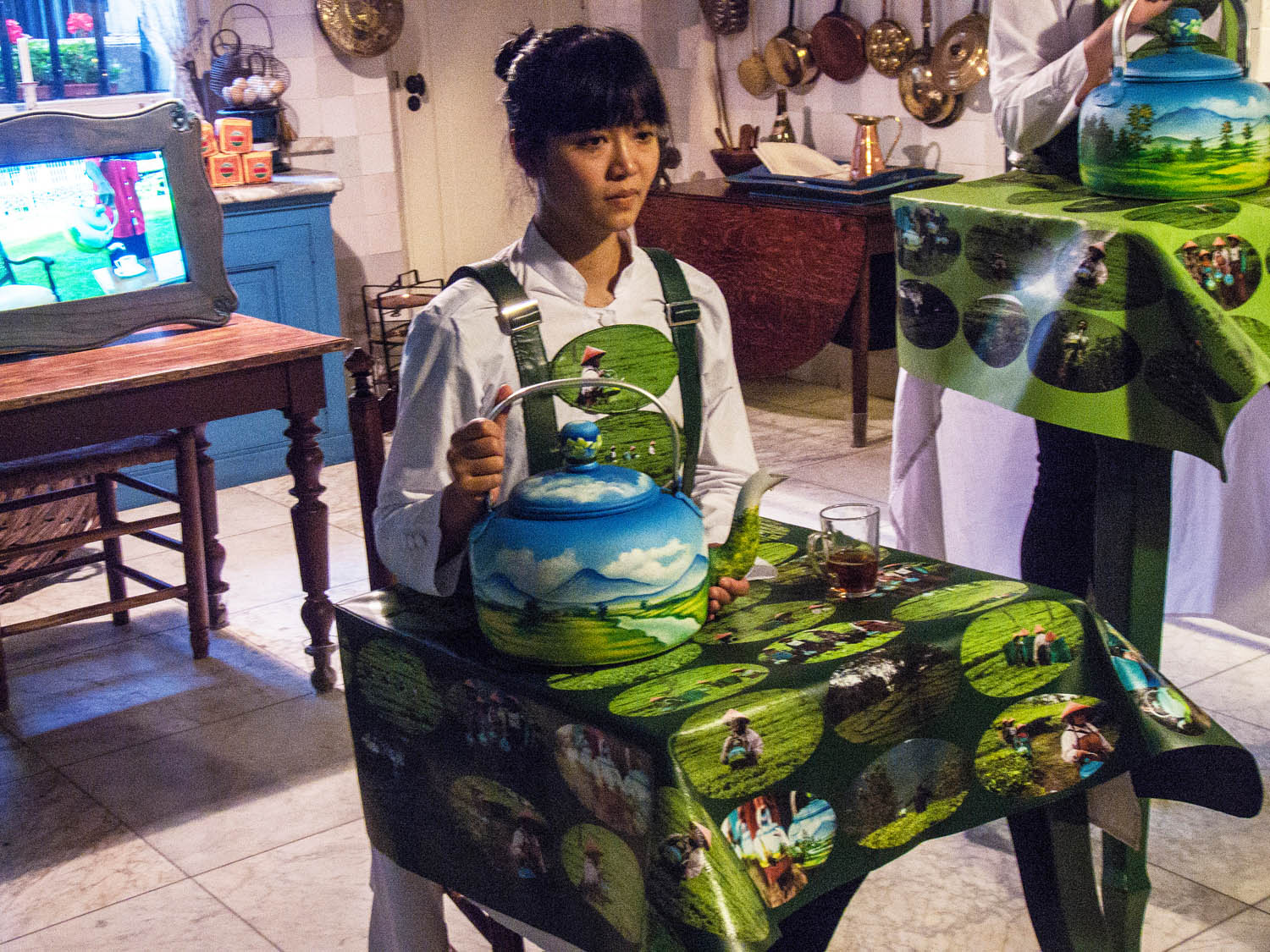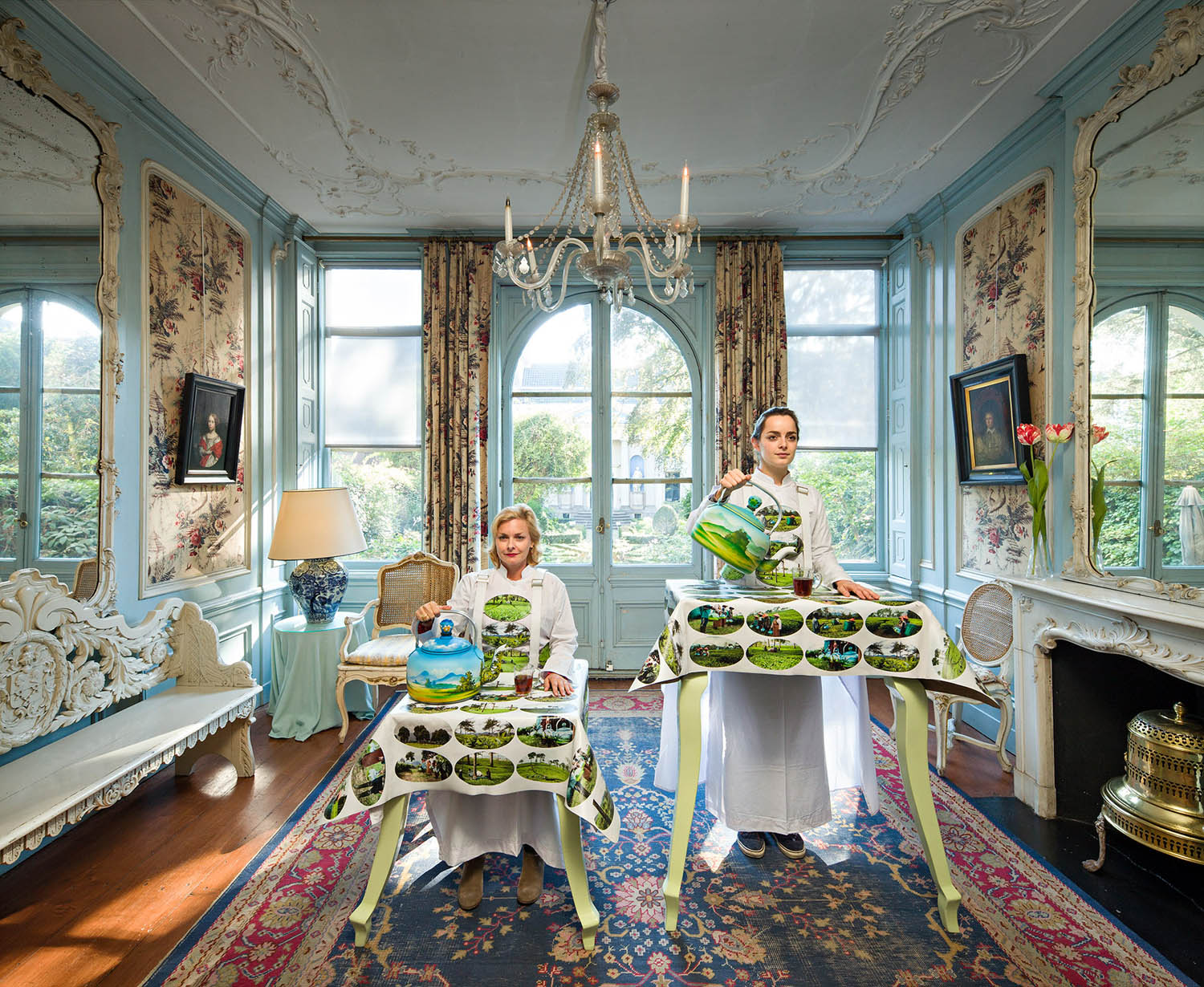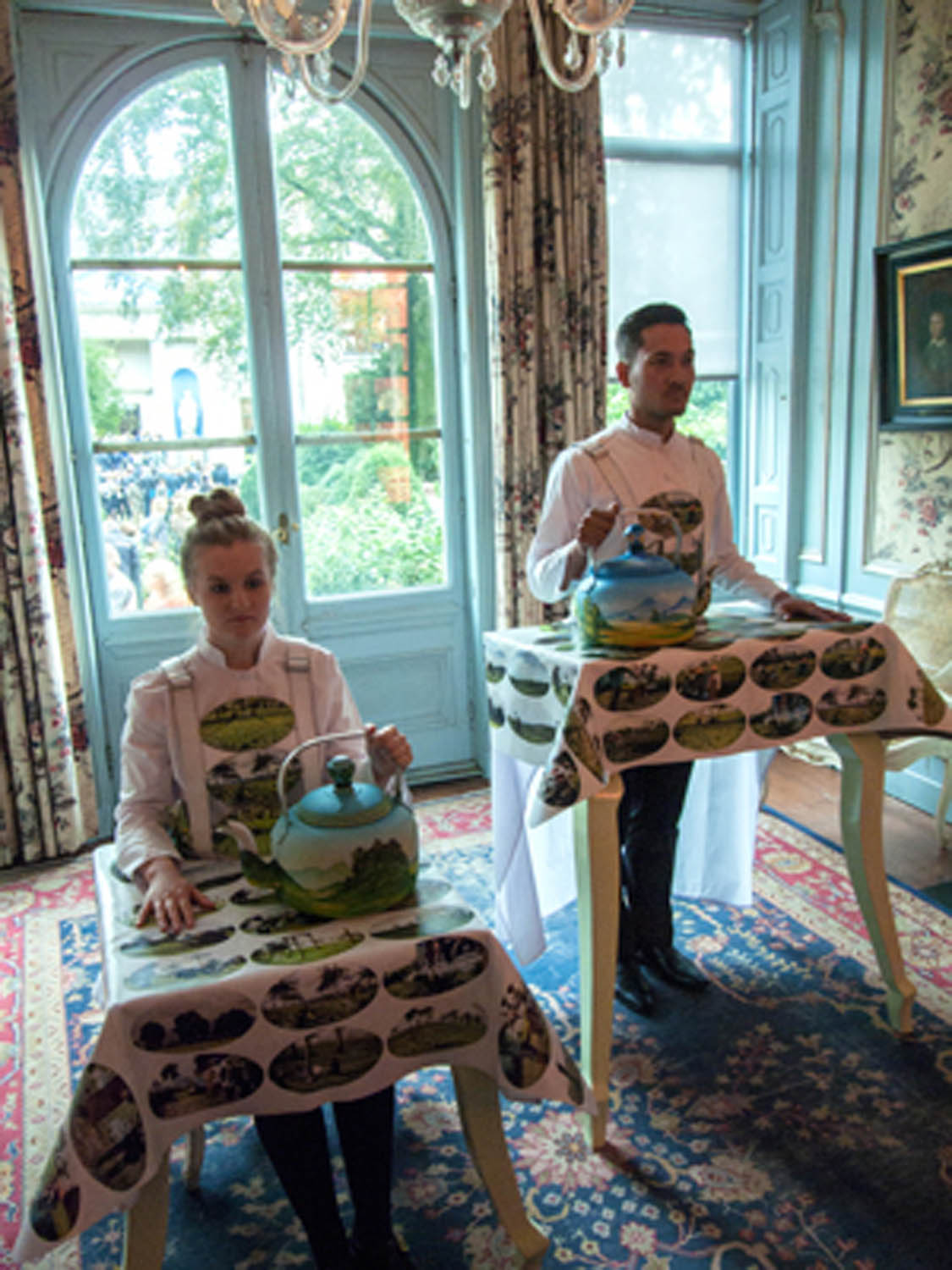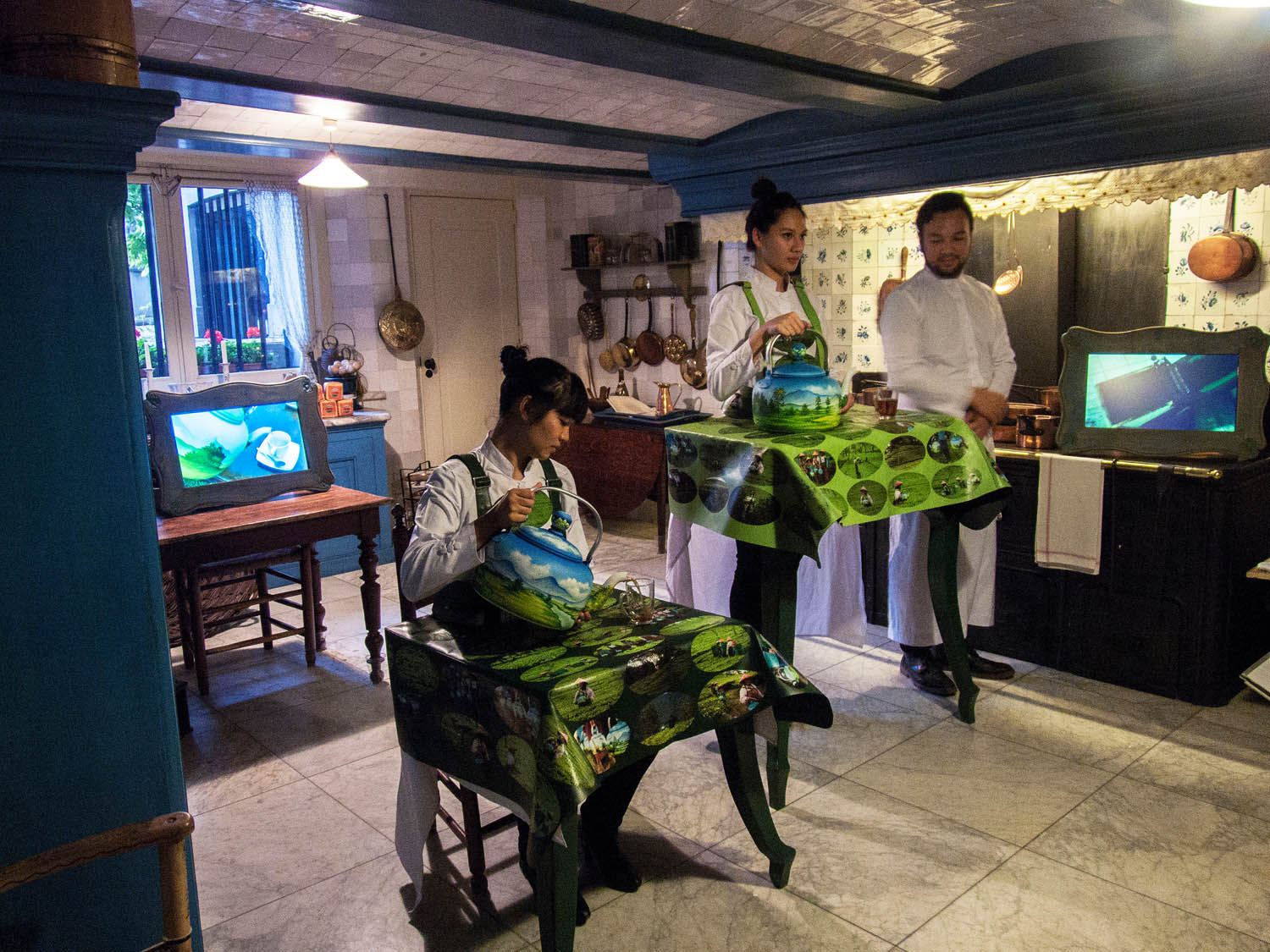We have to live with the idea that as human beings, we can see things only from a single or a few perspectives (due to our backgrounds). We can never see something from all angles.
The work ‘A Binkered View’ is about the power relations between suzerain and vassal (ruler and subject, the oppressor and the oppressed). I explored how the different sides of this power construction are sometimes blurred or reversed. For example: in the second half of the 18th century, the Sultan of Yogyakarta, Sri Sultan Hamengkubuwono IIV, hired white militaries and Dutch coachmen to increase his status.[1]
For this work I looked into tea cultures throughout the centuries. Tea was first introduced in Europe in the beginning of the 17th century. At the same time, the VOC [the United East Indian Compagny] was established.
Tea
Wikipedia: Around 1610 for the first time a small quantity of tea was brought to the Netherlands and in the first instance got examined as a curiosity. Later on in the 17th century, the VOC started shipping larger quantities of tea to the Netherlands. That tea came from Batavia, where tea was brought from China. In the 18th century drinking of tea became really common in the Netherlands and the VOC started to directly import tea from Guangdong in China.
In the 19th century, tea plantations in Java held many Assam tea trees from India. For her whole adult life, my grandfather’s sister, together with her husband and children, lived near a tea plantation on the slopes of the Pengalengan plateau, in the Malabar district near Bandung. The novel Heeren van de Thee [English title: The Tea Lords) (1992) by Dutch writer Hella Haasse recounts the story of this plantation and the struggle of the “planters”. I traveled to the Malabar plantation and explored the area, the tea factory and the Assam tea plants. Malabar is also the name of an area along the South-west coast of India, which was a Dutch colony from 1661-1795. It is interesting that not only Assam tea plants were brought to Java from India but also names of areas like ‘Malabar’.
For the work ‘A Blinkered View – High Tea, Low Tea’, I worked with painter Anex from Jatiwangi, a village in West Java along the famous Java Great Post Road [“De Grote Postweg” in Dutch]. Dutch colonizer Herman Willem Deandels, who was governer general at the time, commissioned the 1000 kilometer long road in 1808. The road has various connotations. Deandels received praise because he built the road in the short timespan of one year, which enabled him to protect Java from British invasion. It carries historical meaning as it is considered the first infrastructure on the island of Java. But the road is also known as the “bloody road”, because of the fact Daendels used Javanese unpaid forced labor to produce the road, which resulted in thousands of deaths.
The painter Anex from Jatiwangi painted various Mooi Indië [‘Beautiful Indies’] landscapes on kettles, capturing the surroundings of Jatiwangi. Mooi Indië paintings derive from the colonial era and present a romanticized, exotising representation of reality. By referring back to this historical style, ‘A Binkered View’ challenges its connotations and bringing to light the unromantic daily life of the past and the cruelties that took place in the Jatiwangi area. At the Malabar tea plantation, I asked tea pickers working in the fields, as well as factory workers and servants working at the former director’s house, to carry the kettles with Anex’s paintings.
High Tea – Low Tea
Performance, tea, kettles
The best quality tea produced in Indonesia is not available to the Indonesian people but is immediately exported. I was told that the first quality tea harvest produced at the Malabar tea factory is sold with the aim to be served to upper classes around the world. For example, in the Netherlands, you can buy Malabar tea as the refined Pickwick Tea. On the other hand, the tea we buy in Indonesian supermarkets and shops is a rough, big leave tea of poor quality.
Six performers took part in this performance: three performers were posititioned in the kitchen, and three performers were in the garden room; one standing, one sitting, one serving. They served two types of tea: the high quality exportedtea and the lower quality Indonesian tea. The performance questions the idea of serving and being served, as well as status, standard and taste.
Note:
[1] Kees Zandvliet, ‘De Nederlandse Ontmoeting met Azie, 1600-1950’, [The Dutch Meeting with Asia, 1600-1950], (Uitgeverij Wbooks: 2002), p. 311.
_
‘A Blinkered View’ was a commissioned artwork for the group exhibition ‘Suspended Histories’ (2013) at Museum Van Loon (Van Loon was one of the founders of the VOC), Amsterdam, The Netherlands.
